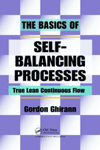The Basics of Self-Balancing Processes: True Lean Continuous Flow
Product Details
Features
- Demonstrates the real power, flexibility, and breakthroughs that this method can have on manufacturing
- Provides a shortcut to achieving true continuous flow in your operations
- Offers many solutions to the problems and shortcomings associated with standard line balancing, such as inventory buffers, variation, operator pace
Summary
Self-Balancing is not just a tweak or change to assembly line balancing, but a completely transformed method for achieving continuous flow. Among the reasons you should try Self-Balancing is that you can expect a productivity improvement of at least 30 percent—with improvements of 50-60 percent quite common.
Using a well-tested method for successful improvements initiated by the author, The Basics of Self-Balancing Processes: True Lean Continuous Flow is the first book to explain how to achieve continuous flow in both simple and complex manufacturing environments. It describes how to recognize and resolve weak links to ensure continuous flow in your manufacturing operations.
The book offers rules, tools, and guidelines to help you not only solve problems at the root, but even eliminate them before they start. It reviews the shortcomings of traditional assembly line balancing and walks readers through the new paradigm of Self-Balancing.
The text includes a comprehensive overview that demonstrates the power, flexibility, and breakthroughs possible with this method. Offering solutions to the shortcomings associated with standard line balancing—including inventory buffers, variation, and operator pace—it provides you with the tools and understanding required to deal with batch and off-line processes, debug your line, arrange your parts and tools, and design your own Self-Balanced cells.
Author Bio(s)
Gordon Ghirann received his B.S. in Mechanical Engineering from Cal Poly, San Luis Obispo. He began developing the self-balancing methodology in 1998, working at and with several companies, products lines, and processes around the world, sharing, consulting, and teaching along the way. Gordon has been a regularly featured presenter of Workshops at the Association of Manufacturing Excellence (AME) conference. He currently resides in California. Visit www.self-balancing.com for more information.
